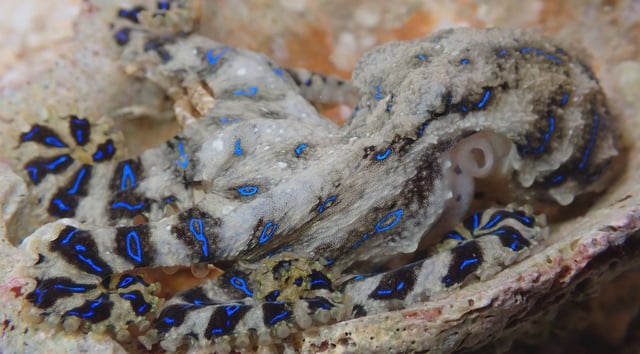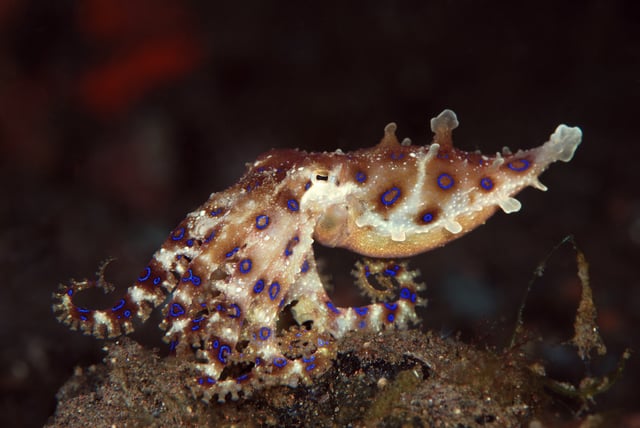Overview
- Male blue-lined octopuses inject a potent neurotoxin, tetrodotoxin, into females' aortas during mating to paralyze them and avoid being eaten.
- The venom temporarily immobilizes females, allowing mating sessions to last 40-75 minutes without risk of cannibalization.
- Females are significantly larger than males and are known to cannibalize their mates after copulation, a common behavior in cephalopods.
- The males' venom glands are three times larger than those of females, reflecting an evolutionary adaptation to mitigate mating risks.
- The study, published in Current Biology, highlights this as an example of an evolutionary 'arms race' between sexes.


